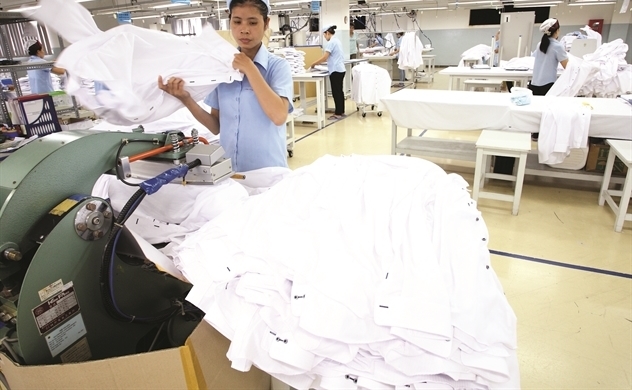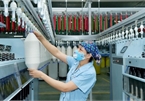Production
Samil Vina, a strategic supplier for the Target Group, received support from the International Finance Corporation (IFC) in upgrading its factory.

The company borrowed $4 million from a bank, an IFC partner in Vietnam, to buy new fabric dyeing machines. The machines helped Samil Vina reduce the volume of water, chemicals and power it consumes by 45 percent. The new system also helped cut 17 percent of production time.
A report found that the new approach allowed the company to save $2 million in operation cost each year, and raise the salary for workers by 60 percent within one year.
Since 2015, IFC has helped Vietnam’s textile and garment factories save $30 million through a program on improving resource use efficiency. The amount of money is calculated by measuring the volume of water, power and chemicals factories can save.
As many as 82 textile, garment and footwear factories have loans of $37 million for more effective power solutions.
| Since 2015, IFC has helped Vietnam’s textile and garment factories save $30 million through a program on improving resource use efficiency. The amount of money is calculated by measuring the volume of water, power and chemicals factories can save. |
Every year, the factories can save 4 million cubic meters of water and reduce 303,000 tons of greenhouse gas emissions. In the textile and garment industry alone, the power consumption level fell by 30 percent thanks to the technology upgrading and the improvement in resources use.
The factories provide products to the biggest retailers and fashion companies in the world, including Adidas, New Balance, Puma and Target. By improving resource use efficiency, factories with tailoring, dyeing, printing and bleaching activities are able to meet higher requirements on sustainability from international customers.
Kyle Kelhofer, Vietnam, Laos and Cambodia Country Director of IFC, commented that local producers using energy and water in a sustainable way save production costs and at the same time increase competitiveness in the global supply chain.
Good Fashion Fund
In early September, the Good Fashion Fund was established. This is an investment fund focusing solely on promoting the application of innovative solutions in the fashion industry with an expected scale of $60 million.
Focusing on India, Bangladesh and Vietnam, which are the world's textile and apparel factories, the fund is designed to remove existing financial barriers as there is no current intermediary that connects investors and producers who need capital to apply modern technology.
According to Katrin Ley, managing director of the fund, producers with revenue of $10-100 million are eligible to receive support to apply advanced technology.
Mai Lan

Textile, dyeing projects unwelcome in many localities
Many localities in the country have refused textile and dyeing projects due to fears of environmental pollution, said Vu Duc Giang, chairman of the Vietnam Textile and Apparel Association (VITAS).

VN apparel industry suffers due to lack of competitive dyeing, fabric segments
Lopsided development of its various segments and dependence on imports have weakened the textile industry’s competitiveness and creativeness, experts said.
 The textile and garment industry is the second biggest polluting industry. Textile factories are the most energy-intensive in the world, consuming 1/10 of the total electricity used by industries in Vietnam.
The textile and garment industry is the second biggest polluting industry. Textile factories are the most energy-intensive in the world, consuming 1/10 of the total electricity used by industries in Vietnam.